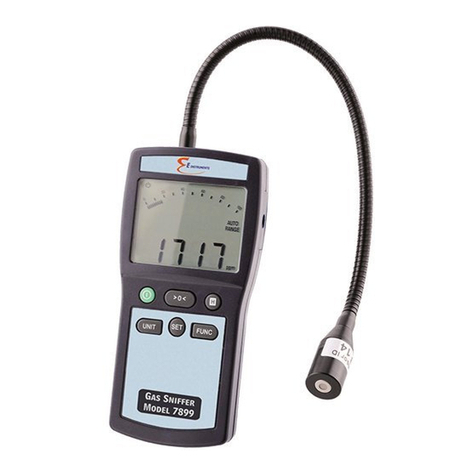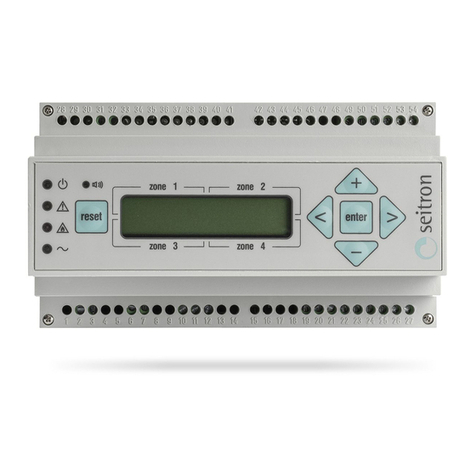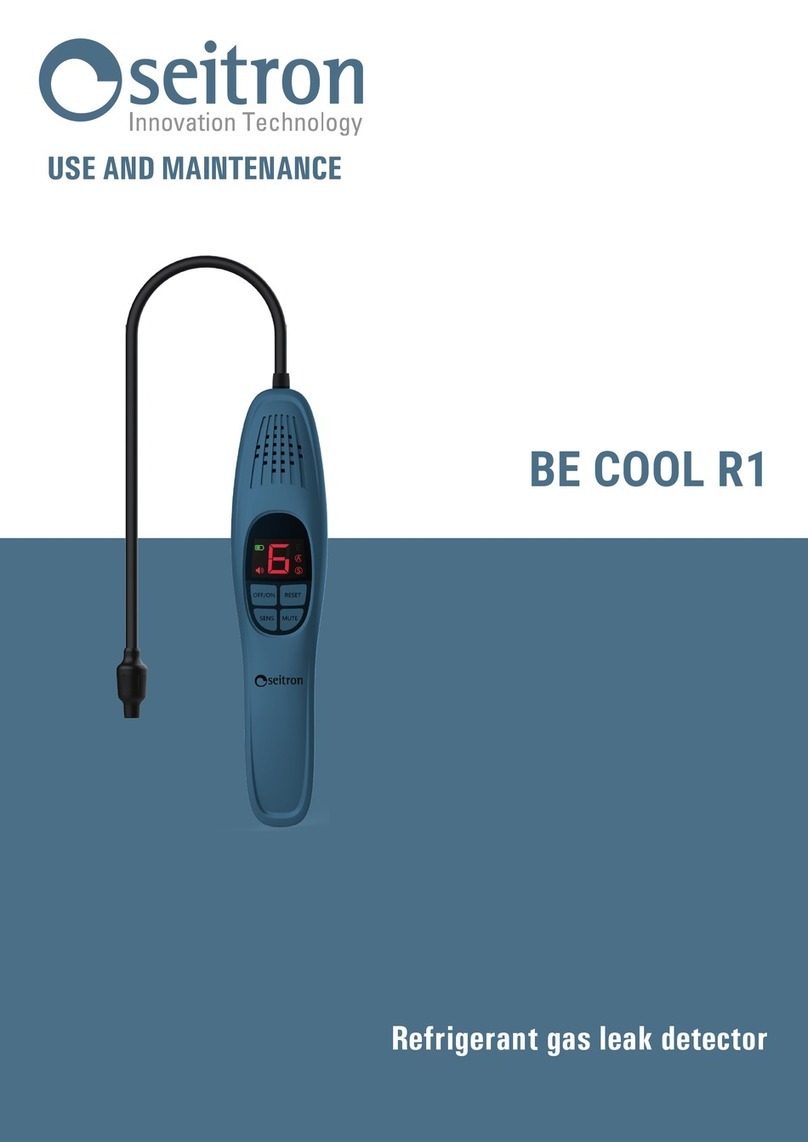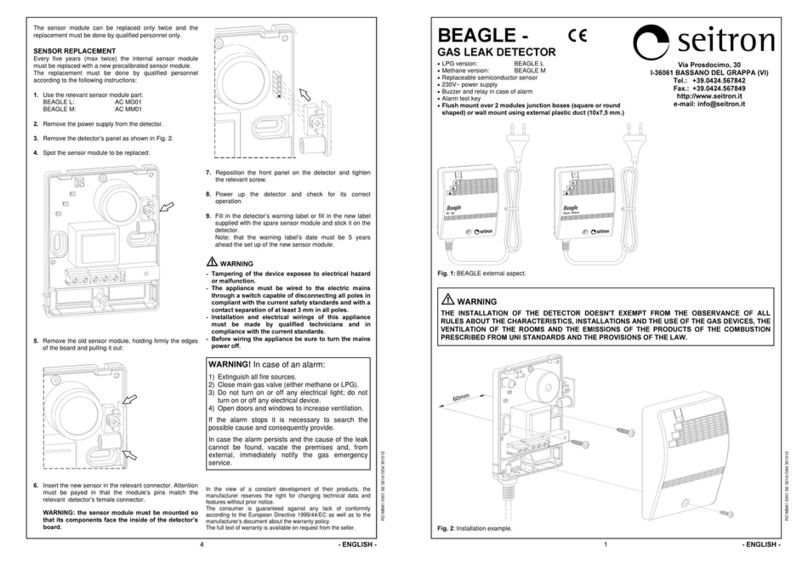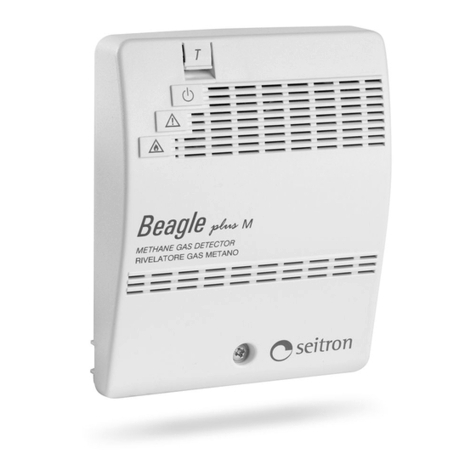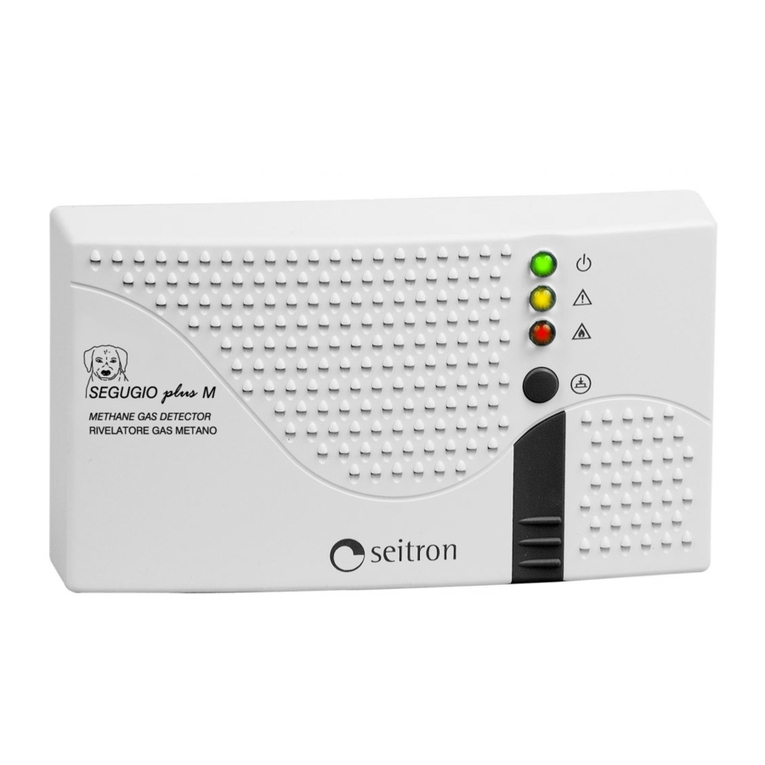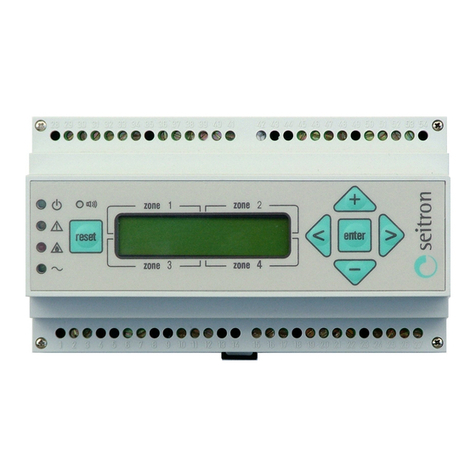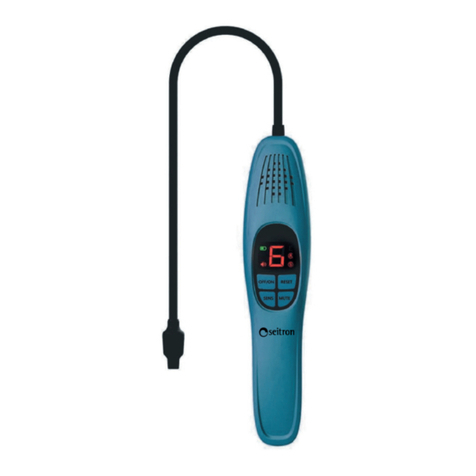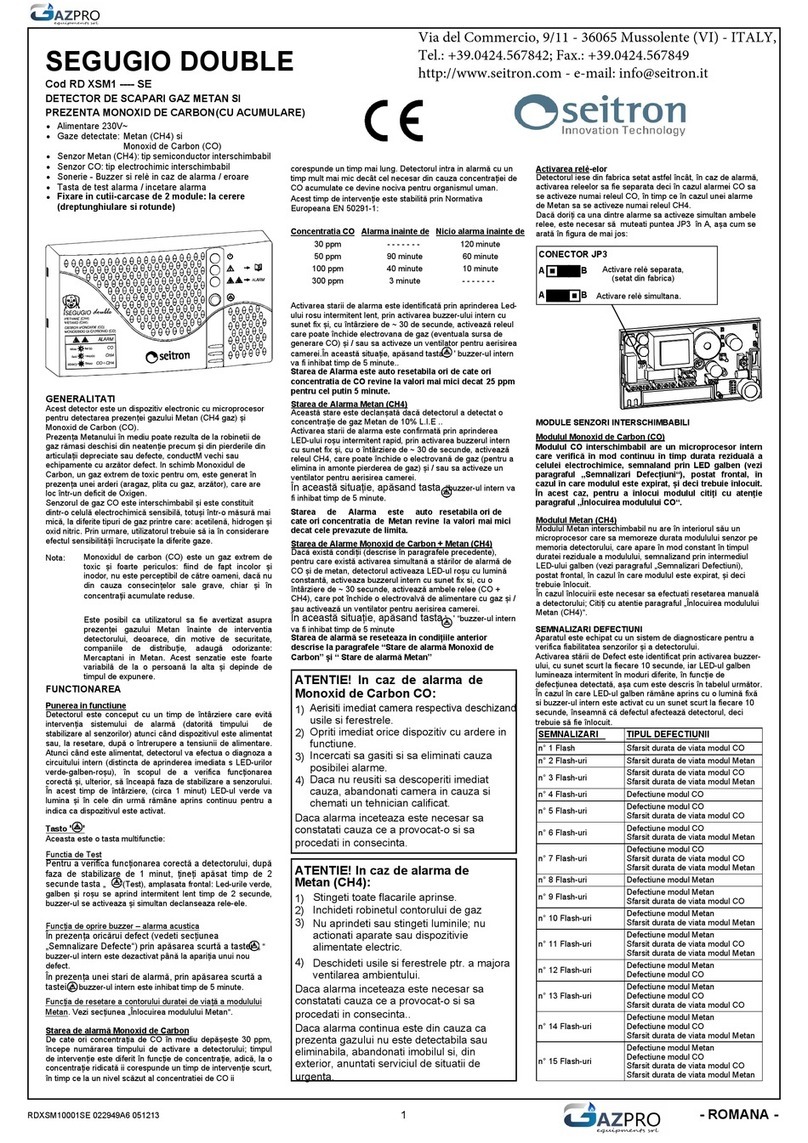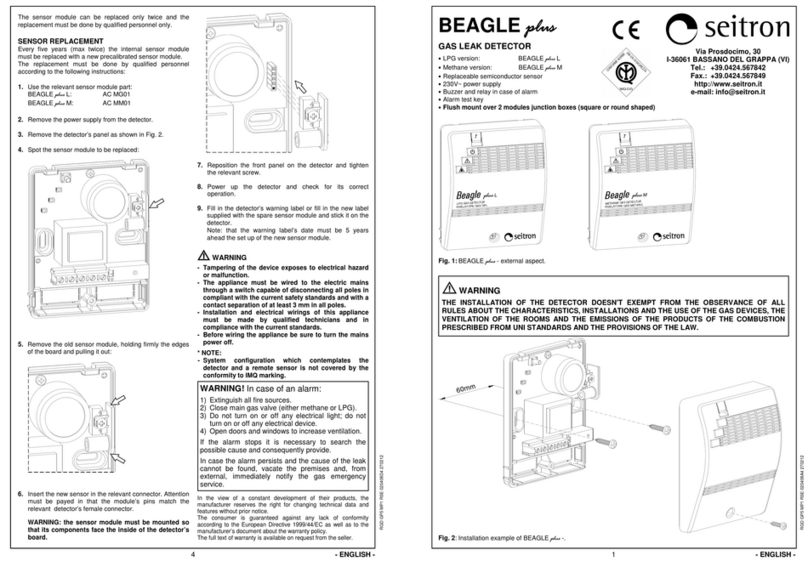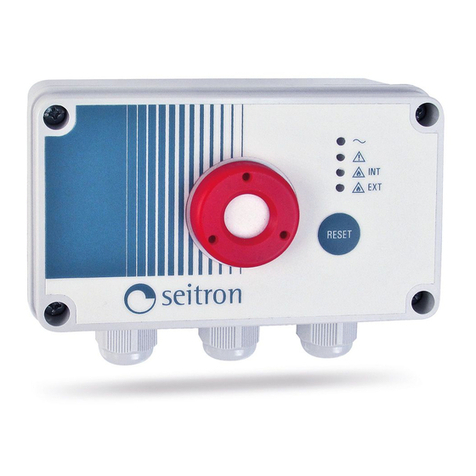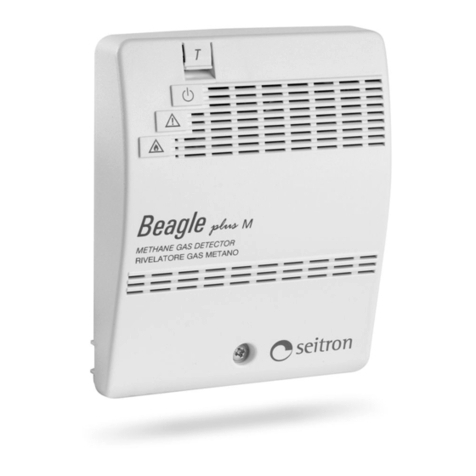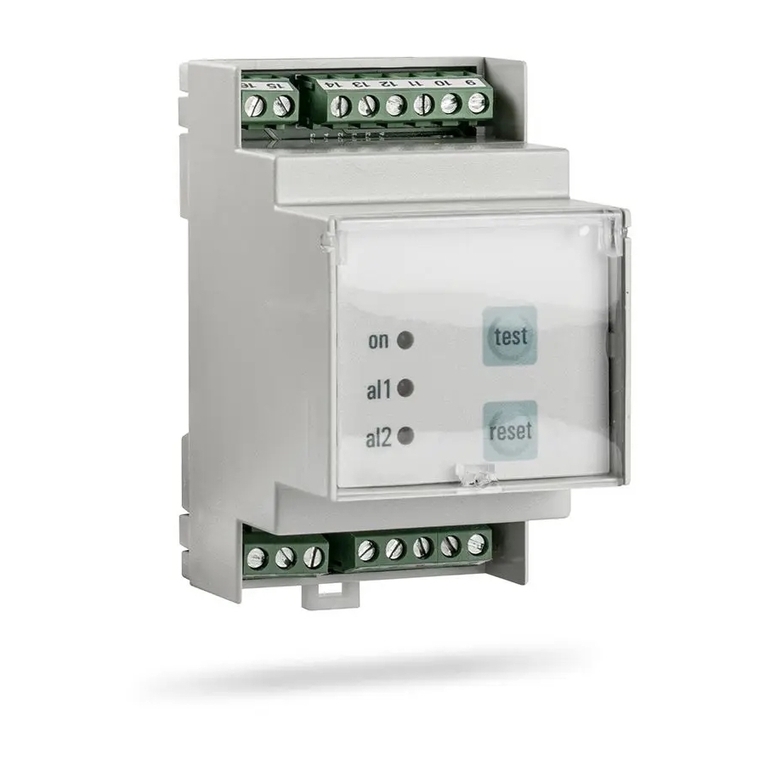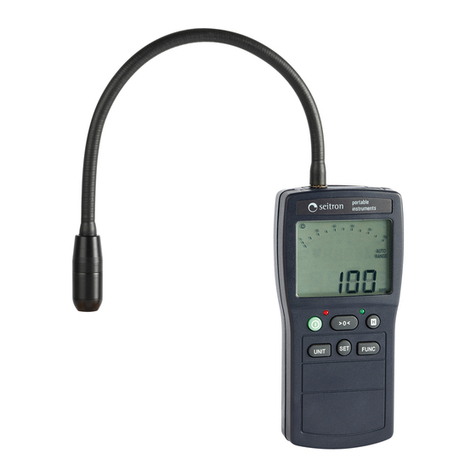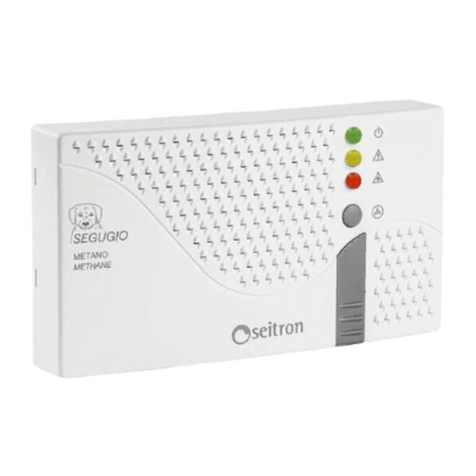
1
>D@23(5$7,21,167$//$7,21$1'0$,17(1$1&(
2SHUDWLRQ
This is a microcontroller based device capable of monitoring the
gas concentration in up to 4 different zones: for each of these a
4 .. 20 mA transmitter can be wired for measurement and
detection of either L.P.G., Methane or Carbon Monoxide (CO).
After power-up the display shows the following information:
]RQH ]RQH
),50:$5(
9(56,21QQQQQQ
]RQH ]RQH
where ’ nnnnnn ’ is the firmware version installed in the device.
This information will remain visible for about 2 seconds. After this
time the main information will be displayed (example):
]RQH ]RQH
*B&SB
*30$
]RQH ]RQH
Each zone provides the following information:
The first letter from left explains the transmitter type wired to the
central unit.
The transmitters which can be wired to the central unit can be
different for each zone; the detectable gases are the following:
- L.P.G.: display shows letter ’
*
’
- Methane (CH4): display shows letter ’
0
’
- Carbon Monoxide: display shows letter ’
&
’.
Values displayed on the right, in % L.E.L. (in case L.P.G. or
Methane transmitters are connected) or ppm (in case of Carbon
Monoxide) are the actual gas concentration values measured by
the transmitters. The last letter shown on the display for each zone
indicates the actual state of the relevant transmitter as explained
in the following:
’
B
:Active state (measuring, normal operation).
’
*
:Fault on the ’
*
’as transmitter (Iout=2 mA).
’
)
:’
)
’ault over the current loop (either short or open circuit
between any of the sensor wires: Iout=0 mA ).
’
3
: ’
3
’realarm state.
’
$
:’
$
’larm state. When ’
295
’ is shown in place of the
concentration value, this means that the upper limit of the
measuring range has been exceeded. The ’
295
’ state
corresponds to an input current value above 20mA.
3UHDODUPDQG$ODUPIXQFWLRQV
The central unit can manage separately the pre-alarm and alarm
conditions through two distinct, Normally Open, output relays.
In case the prealarm threshold is reached, the central unit enables
the relevant relay, which, in turn, closes its output contacts.
In case the alarm threshold state is reached the unit will also
enable the alarm relay thus closing the relevant output contact. At
the same time the central unit has stored the pre-alarm state first
and the alarm state later: the date and hour when the last has
happened will be retained in the central unit memory.
In case the gas concentration returns below the pre-alarm
threshold, the relevant relay will return to its normal operation
state or not, according to how the prealarm relay operating mode
was set in the configuration.
1RWH
For compliance with the current performance standards the
Alarm relay has always a latched operation and this mode cannot
be modified by the user. Whenever either an Alarm situation (’A’)
or an Overrange (’OVR’) situation is reached, this relay is kept
energised together with the internal buzzer and the red led until
the user intentionally presses for 3 seconds the ’
UHVHW
’ key.
$X[LOLDU\UHOD\
The central unit features one additional relay with changeover
contacts (SPDT) which can be activated according to events and
operating modes set by the installer through the relevant menu.
'LVSOD\RIWKHODVWDODUPVWDWH
The central unit can retain the date and hour of the last alarm
event happened in each zone.
These information can be read by the user at any time by pressing
for 3 seconds the ’
UHVHW
’ key when in main display screen, then
pressing ’<’ or ’>’ keys to cycle through the zones.
(OHFWULFDO:LULQJV
The central unit is normally powered with 230V~ mains voltage.
At terminals 6 and 7 the user can wire a battery backup system
whose purpose is to grant full functionality to the central unit even
in case of power failure (see section [m] for details).
Normally Closed (NC) output of the auxiliary relay is available at
terminals 15 and 16, while the Normally Open (NO) one is
available at terminals 16 and 17.
This output can be used either for driving ’general purpose’ loads
as a siren or an flashing light or, with proper configuration of the
relevant parameters, to drive a gas shut-off electrovalve.
Moreover this central unit features two single pole relay contacts
for each zone, one for prealarm and one for alarm.
The number of transmitters which can be wired to the central unit
is 4, each compliant with the 4..20 mA current loop system.
In order to make electrical wirings please refer to the suggested
wiring diagrams. Please also note that all the relay outputs of the
central unit do not feed power to the loads.
In other words all outputs are ’voltage free’, giving the user more
freedom to use loads with several operating voltages.
D :$51,1*
x
7KLV&HQWUDO8QLWLV127DSSURYHGIRULQVWDOODWLRQLQ$7(;
FODVVLILHG]RQHV
x
$OOZLULQJVZLWKUHPRWHVHQVRUVPXVWEHPDGHXVLQJZLUHV
ZLWK PPð PLQLPXP FURVV VHFWLRQ DQG QR ORQJHU WKDQ
P'RQRWXVHVDPHGXFWIRUVLJQDOZLUHVDQGPDLQV
x
,QFDVHRILQVWDOODWLRQZKHUHVWURQJ(0&GLVWXUEDQFHVDUH
SUHVHQWLWLV KLJKO\VXJJHVWHGWKHXVH RIVKLHOGHG FDEOHV
7KHVKLHOGPXVWEHFRQQHFWHGWRWKH *QG WHUPLQDORIWKH
UHOHYDQW]RQHRQWKH&HQWUDO8QLWVLGHRQO\
x
7KHDSSOLDQFHPXVWEHZLUHGWRWKHHOHFWULFPDLQVWKURXJKD
VZLWFK FDSDEOH RI GLVFRQQHFWLQJ DOO SROHV LQ FRPSOLDQFH
ZLWK WKH FXUUHQW VDIHW\ VWDQGDUGV DQG ZLWK D FRQWDFW
VHSDUDWLRQRIDWOHDVWPPLQDOOSROHV
x
,QVWDOODWLRQDQGHOHFWULFDOZLULQJVRIWKLVDSSOLDQFHPXVWEH
PDGHE\ TXDOLILHGWHFKQLFLDQV DQG LQ FRPSOLDQFH ZLWKWKH
FXUUHQWWHFKQLFDODQGVDIHW\VWDQGDUGV
x
%HIRUHZLULQJWKHDSSOLDQFHEHVXUHWRWXUQWKHPDLQVSRZHU
RGY S00 MBP4 SE 019179A0 200411
5*<60%3
=21(6 *$6 '(7(&7,21 &(175$/ 81,7 :,7+
566(5,$/287387
x
230V~ power supply
x
Controls up to 4 zones
x
Manages CO, L.P.G. and Methane (CH4) transmitters
x
Wide parameters configuration freedom
x
Last alarm conditions data retention
x
LCD backlight 2 x 16 characters display
x
9 modules DIN rail mount
x
RS232 serial output
VHLW
RQ
9LD3URVGRFLPR
,%$66$12'(/*5$33$9,
7HO
)D[
KWWSZZZVHLWURQLW
HPDLOLQIR#VHLWURQLW
F
